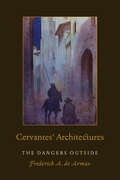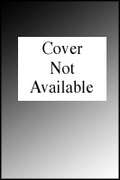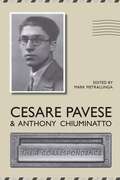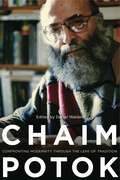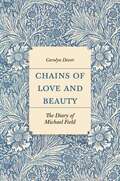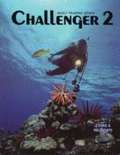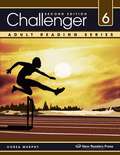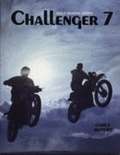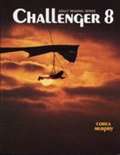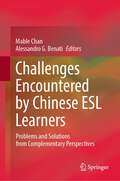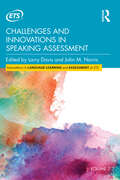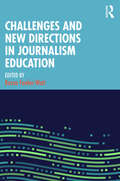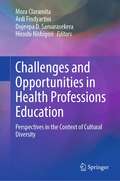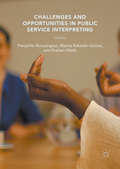- Table View
- List View
Cervantes, Literature and the Discourse of Politics
by Anthony J. CascardiWhat is the role of literature in the formation of the state? Anthony J. Cascardi takes up this fundamental question in Cervantes, Literature, and the Discourse of Politics, a comprehensive analysis of the presence of politics in Don Quixote. Cascardi argues that when public speech is constrained, as it was in seventeenth-century Spain, politics must be addressed through indirect forms including comedy, myth, and travellers' tales.Cervantes, Literature, and the Discourse of Politics convincingly re-engages the ancient roots of political theory in modern literature by situating Cervantes within a long line of political thinkers. Cascardi notably connects Cervantes's political theory to Plato's, much as the writer's literary criticism has been firmly linked to Aristotle's. He also shows how Cervantes's view of literature provided a compelling alternative to the modern, scientific politics of Machiavelli and Hobbes, highlighting the potential interplay of literature and politics in an ideal state.
Cervantes’ Architectures: The Dangers Outside (Toronto Iberic)
by Frederick A. de ArmasCervantes’ Architectures is the first book dedicated to architecture in Cervantes’ prose fiction. At a time when a pandemic is sweeping the world, this book reflects on the danger outside by concentrating on the role of enclosed structures as places where humans may feel safe, or as sites of beauty and harmony that provide solace. At the same time, a number of the architectures in Cervantes trigger dread and claustrophobia as they display a kind of shapelessness and a haunting aura that blends with the narrative. This volume invites readers to discover hundreds of edifices that Cervantes built with the pen. Their variety is astounding. The narrators and characters in these novels tell of castles, fortifications, inns, mills, prisons, palaces, towers, and villas which appear in their routes or in their conversations, and which welcome them, amaze them, or entrap them. Cervantes may describe actual buildings such as the Pantheon in Rome, or he may imagine structures that metamorphose before our eyes, as we come to view one architecture within another, and within another, creating an abyss of space. They deeply affect the characters as they feel enclosed, liberated, or suspended or as they look upon such structures with dread, relief, or admiration. Cervantes' Architectures sheds light on how places and spaces are perceived through words and how impossible structures find support, paradoxically, in the literary architecture of the work.
Cervantine Blackness (Iberian Encounter and Exchange, 475–1755)
by Nicholas R. JonesThere is no shortage of Black characters in Miguel de Cervantes’s works, yet there has been a profound silence about the Spanish author’s compelling literary construction and cultural codification of Black Africans and sub-Saharan Africa. In Cervantine Blackness, Nicholas R. Jones reconsiders in what sense Black subjects possess an inherent value within Cervantes’s cultural purview and literary corpus.In this unflinching critique, Jones charts important new methodological and theoretical terrain, problematizing the ways emphasis on agency has stifled and truncated the study of Black Africans and their descendants in early modern Spanish cultural and literary production. Through the lens of what he calls “Cervantine Blackness,” Jones challenges the reader to think about the blind faith that has been lent to the idea of agency—and its analogues “presence” and “resistance”—as a primary motivation for examining the lives of Black people during this period. Offering a well-crafted and sharp critique, through a systematic deconstruction of deeply rooted prejudices, Jones establishes a solid foundation for the development of a new genre of literary and cultural criticism. A searing work of literary criticism and political debate, Cervantine Blackness speaks to specialists and nonspecialists alike—anyone with a serious interest in Cervantes’s work who takes seriously a critical reckoning with the cultural, historical, and literary legacies of agency, antiblackness, and refusal within the Iberian Peninsula and the global reaches of its empire.
Cesare Pavese and Antonio Chiuminatto: Their Correspondence (The Royal Society of Canada Special Publications)
by Mark PietralungaItalian poet, novelist, literary critic and translator Cesare Pavese (1908-1950) is generally recognized as one of the most important writers of his period. Between the years 1929 and 1933, Pavese enjoyed a rich correspondence with his Italian American friend, the musician and educator Antonio Chiuminatto (1904-1973). The nature of this correspondence is primarily related to Pavese's thirst to learn about American culture, its latest books, its most significant contemporary writers, as well as its slang. This volume presents an annotated edition of Pavese and Chiminatto's complete epistolary exchange.Mark Pietralunga's brilliant introduction provides historical and cultural context for the letters and traces Pavese's early development as a leading Americanist and translator. The volume also includes an appendix of Chiuminatto's detailed annotations and thorough explanations of colloquial American terms and slang, drawn from the works of Sinclair Lewis, Sherwood Anderson, and William Faulkner. A lively and illuminating exchange, this collection ultimately corroborates critical opinion that America was the igniting spark of Pavese's literary beginnings as a writer and translator.
Chaim Potok: Confronting Modernity Through the Lens of Tradition
by Daniel WaldenChaim Potok was a world-class writer and scholar, a Conservative Jew who wrote from and about his tradition and the conflicts between observance and acculturation. With a plain, straightforward style, his novels were set against the moral, spiritual, and intellectual currents of the twentieth century. This collection aims to widen the lens through which we read Chaim Potok and to establish him as an authentic American writer who created unforgettable characters forging American identities for themselves while retaining their Jewish nature. The essays illuminate the central struggle in Potok’s novels, which results from a profound desire to reconcile the appeal of modernity with the pull of traditional Judaism. The volume includes a memoir by Adena Potok and ends with Chaim Potok’s “My Life as a Writer,” a speech he gave at Penn State in 1982.Aside from the editor, the contributors are Victoria Aarons, Nathan P. Devir, Jane Eisner, Susanne Klingenstein, S. Lillian Kremer, Jessica Lang, Sanford E. Marovitz, Kathryn McClymond, Hugh Nissenson, Adena Potok, and Jonathan Rosen.
Chaim Potok: Confronting Modernity Through the Lens of Tradition
by Daniel WaldenChaim Potok was a world-class writer and scholar, a Conservative Jew who wrote from and about his tradition and the conflicts between observance and acculturation. With a plain, straightforward style, his novels were set against the moral, spiritual, and intellectual currents of the twentieth century. This collection aims to widen the lens through which we read Chaim Potok and to establish him as an authentic American writer who created unforgettable characters forging American identities for themselves while retaining their Jewish nature. The essays illuminate the central struggle in Potok’s novels, which results from a profound desire to reconcile the appeal of modernity with the pull of traditional Judaism. The volume includes a memoir by Adena Potok and ends with Chaim Potok’s “My Life as a Writer,” a speech he gave at Penn State in 1982.Aside from the editor, the contributors are Victoria Aarons, Nathan P. Devir, Jane Eisner, Susanne Klingenstein, S. Lillian Kremer, Jessica Lang, Sanford E. Marovitz, Kathryn McClymond, Hugh Nissenson, Adena Potok, and Jonathan Rosen.
Chain 7: memoir/anti-memoir
by Juliana Spahr Jena OsmanMemoir/Antimemoir presents new works that show the expanse and range of contemporary memoir. The works gathered here reveal memoir as re-invention, as generic interplay, as conversations among works, as travel back and forth and across times and states of mind. One can see in these works the political and psychic stakes involved in self-representation. Features work by C. S. Giscombe, Lisa Jarnot, Shirin Neshat, Edwin Torres, Ron Silliman, Anne Waldman, and Rosmarie Waldrop.
Chains of Love and Beauty: The Diary of Michael Field
by Carolyn DeverWhy a monumental diary by an aunt and niece who published poetry together as &“Michael Field&”—and who were partners and lovers for decades—is one of the great unknown works of late-Victorian and early modernist literatureMichael Field, the renowned late-Victorian poet, was well known to be the pseudonym of Katharine Bradley (1846–1914) and her niece, Edith Cooper (1862–1913). Less well known is that for three decades, the women privately maintained a romantic relationship and kept a double diary, sharing the page as they shared a bed and eventually producing a 9,500-page, twenty-nine-volume story of love, life, and art in the fin de siècle. In Chains of Love and Beauty, the first book about the diary, Carolyn Dever makes the case for this work as a great unknown &“novel&” of the nineteenth century and as a bridge between George Eliot and Virginia Woolf, Victorian marriage plot and modernist experimentation.While Bradley and Cooper remained committed to publishing poetry under a single, male pseudonym, the diary, which they entitled Works and Days and hoped would be published after their deaths, allowed them to realize literary ambitions that were unfulfilled during their lifetime. The women also used the diary, which remains largely unpublished, to negotiate their art, desires, and frustrations, as well as their relationships with contemporary literary celebrities, including Robert Browning, Oscar Wilde, William Butler Yeats, and Walter Pater.Showing for the first time why Works and Days is a great experimental work of late-Victorian and early modernist writing, one that sheds startling new light on gender, sexuality, and authorship, Dever reveals how Bradley and Cooper wrote their shared life as art, and their art as life, on pages of intimacy that they wanted to share with the world.
Challenger (Adult Reading Series #4)
by Corea MurphyThe Heart, Babe Ruth, Time, Insects, The Brain Sees All, The Sun, Thomas Edison Knives, Forks, and Spoons, Manners, Flying Saucers, Accepting Who You Are, Anne Frank: Part I & II, The Ship of the Desert, Some Facts about Southpaws, Some Thoughts about Dying, The Number One Eater in America, The Great Hunger Digestion, Nail Soup.
Challenger 6
by Murphy CoreaChallenger is an eight-level integrated series that develops reading, writing, and reasoning skills through high-interest fiction and nonfiction stories relevant to today's adults.
Challenger 7
by Corea MurphyThis is book 7 of an 8-volume series of reading instruction books for adults, at an approximate seventh grade level. The book integrates reading and writing skills through the use of reading selections and targeted exercises. The reading selections are adapted from works of fiction.
Challenges Encountered by Chinese ESL Learners: Problems and Solutions from Complementary Perspectives
by Alessandro G. Benati Mable ChanThis book provides a blended approach in outlining the properties of grammatical knowledge that have been causing difficulty to Chinese speaking learners, including tense and aspect, articles, passives, unaccusatives, plurality and motion verbs. It explains from different linguistics perspectives how these constraints/difficulties might be dealt with. It also offers readers a comprehensive account of these problems, and outlines the possible pedagogical solutions teachers can try in the classroom. These topics are selected because they bring substantial challenges and difficulties to Chinese English as a Second Language (ESL) learners. This book bridges the gap between acquisition theory and language pedagogy research, benefiting not just language learners but language teachers around the world, and all those who would like to witness collaboration between second language acquisition theory and second language teaching practice in general. It initiates future work in which researchers from different fields with diverging theoretical perspectives and methodological approaches will be able to develop studies that are compatible with each other. This overall can facilitate our understanding of second language acquisition, and how instruction might help.
Challenges and Innovations in Speaking Assessment (Innovations in Language Learning and Assessment at ETS)
by Larry DavisThe assessment of second language speaking ability has played a central role in the evolution of language testing theory and practice. Educational Testing Service (ETS) has been a primary innovator in all dimensions of speaking assessment since the 1970s, addressing critical challenges through the advent of new test designs, scoring practices, and measurement technologies to make especially large-scale, standardized testing of speaking ability a reality.This volume presents a sample of key ETS research and development efforts related to speaking assessment over the years. The contributors highlight diverse contributions to conceptualizing the speaking construct, designing speaking test tasks, scoring speech samples, marshalling technologies for test delivery and automated scoring, and developing end-to-end speaking assessment procedures. The first part emphasizes how some of the earliest large-scale speaking assessments were designed and put into practice. The second part features research and development related to speaking assessments in the TOEIC and TOEFL testing suites, emphasizing their validity and scoring. The third part introduces research-based innovations in testing new and more nuanced speaking constructs, and in using automated scoring of speech to address diverse assessment needs.The volume will appeal to language testing professionals and test score users in illuminating how ETS has influenced the development of speaking assessment as well as pointing to multiple directions for future research and practice.
Challenges and New Directions in Journalism Education
by Karen Fowler-WattDrawing on original and innovative contributions from educators, practitioners and students, Challenges and New Directions in Journalism Education captures and informs our understanding of journalism pedagogy in the context of ongoing shifts in journalism practice. Journalism is once again facing challenges, accused of elitism and often branded as too far removed from the reality of people’s lives. The post-truth context has engendered a crisis of trust, and journalism is portrayed as core to the problem, rather than the solution. Citizen journalism and societal shifts have provoked a move away from ‘top-down’ reporting, towards greater interactivity with audiences, but inclusivity remains an issue with news organisations and industry councils intensifying protocols in a bid to create more diverse newsrooms. This poses multiple questions for journalism educators: How is journalism education engaging with these imperatives in the ‘post-pandemic’ context? How can student perspectives inform our response? What journalism should we teach? Against this landscape, and in response to these questions, this book engages with a series of key themes and objectives related to challenges and new directions in journalism education. These include discussions around safeguarding, sustainability, journalism’s ‘democratic deficit’, integrating media literacy and the ‘post-pandemic’ context. Each chapter draws on primary data, case studies and examples to describe and unpack the topic, and concludes with practical suggestions for journalism educators. Challenges and New Directions in Journalism Education is key reading for anyone teaching or training to become a teacher of journalism.
Challenges and Opportunities in Health Professions Education: Perspectives in the Context of Cultural Diversity
by Mora Claramita Ardi Findyartini Dujeepa D. Samarasekera Hiroshi NishigoriThis book addresses health professions educational challenges specific to non-Western cultures, implementing a shifting paradigm for educating future health professionals towards patient-centered care. While health professions education has received increasing attention in the last three decades, promoting student-centered learning principles pioneered by leaders in the medical community has, for the most part, remain rooted in the Western context. Building from Hofstede’s analysis of the phenomena of cultural dimensions, which underpin the way people build and maintain their relationships with others and influence social, economic, and political well-being across nations, this book demarcates the different cultural dimensions between East and West, applied to medical education. The respective ‘hierarchical’ and ‘collectivist’ cultural dimensions are unpacked in several studies stemming from non-western countries, with the capacity to positively influence healthcare education and services. The book provides new insights for researchers and health professional educators to understand how cultural context influences the input, processes, and output of health professionals’ education. Examples include how cultural context influences the ways in which students respond to teachers, how teachers giving feedback to students, and the challenges of peer feedback and group work. The authors also examine causes for student hesitation in proposing ideas, the pervasive cultural norm of maintaining harmony, the challenges of teamwork in clinical settings, the need to be sensitive to community health needs, the complexity of clinical decision making, and the challenge of how collectivist cultural values play into group dynamics. This book aims to advocate a more culturally-sensitive approach to educating health professionals, and will be relevant to both students and practitioners in numerous areas of public health and medical education.
Challenges and Opportunities in Public Service Interpreting
by Théophile Munyangeyo Graham Webb Marina Rabadán-GómezPublic Service Interpreting is a hugely complex activity, encompassing human, ethical, commercial and political dimensions. It is unseen and unrecognized by most of the population but vital to those who depend on it for their security or wellbeing. The quality of PSI provision is seen by the authors as a clear indicator of how a society views and responds to the realities of a multi-ethnic and multilingual global community. Following recent significant changes in the power balance between them this book explores the increasing tensions among multiple stakeholders who together deliver such a fundamental service in a modern open society. Chapters focus on how all stakeholders need to appreciate the wider context of political and economic realities whilst collaborating more responsibly to deliver the conditions, training and support needed for expert linguists to be attracted to and retained in this vital profession.
Challenges and Prospects in Second Language Enrolment: A Tasmanian Case Study (Education in the Asia-Pacific Region: Issues, Concerns and Prospects #77)
by Stephanie RicheyThis book provides a contextual examination of the factors that affect students&’ elective second language (L2) study in Australia. It investigates why Tasmanian students do or do not choose to enrol in an elective second language at school and explores relationship of motivational factors that affect their decisions. This is a case study of one education system, but the findings are relevant to others globally. With the field of L2 research turning attention to motivations around languages other than English (LOTEs), this book provides a unique account of adolescent students&’ LOTE experiences in an Anglophone setting. It demonstrates there is a complex ensemble of factors that affect subject choice and enrolment decisions regarding elective second language learning. In the face of Global English, these findings address a gap in the research of adolescent LOTE learners, the majority of who have English as a first language, and thus motivations for language learning vastly differ from those wanting to learn English as an additional language. The findings outlined in this book are valuable as they consider the practical implications for school language programmes. This book will be of interest to scholars, teachers, and policy makers globally wishing to gain further insight into motivational factors affecting L2 enrolment.
Challenges for Language Education and Policy: Making Space for People
by Bernard Spolsky Ofra Inbar-Lourie Michal TannenbaumAddressing a wide range of issues in applied linguistics, sociolinguistics, and multilingualism, this volume focuses on language users, the ‘people.’ Making creative connections between existing scholarship in language policy and contemporary theory and research in other social sciences, authors from around the world offer new critical perspectives for analyzing language phenomena and language theories, suggesting new meeting points among language users and language policy makers, norms, and traditions in diverse cultural, geographical, and historical contexts. Identifying and expanding on previously neglected aspects of language studies, the book is inspired by the work of Elana Shohamy, whose critical view and innovative work on a broad spectrum of key topics in applied linguistics has influenced many scholars in the field to think “out of the box” and to reconsider some basic commonly held understandings, specifically with regard to the impact of language and languaging on individual language users rather than on the masses.
Challenges in Language Testing Around the World: Insights for language test users
by Christine Coombe James Dean Brown Betty LanteigneThis book combines insights from language assessment literacy and critical language testing through critical analyses and research about challenges in language assessment around the world. It investigates problematic practices in language testing which are relevant to language test users such as language program directors, testing centers, and language teachers, as well as teachers-in-training in Graduate Diploma and Master of Arts in Applied Linguistics programs. These issues involve aspects of language testing such as test development, test administration, scoring, and interpretation/use of test results. Chapters in this volume discuss insights about language testing policy, testing world languages, developing program-level language tests and tests of specific language skills, and language assessment literacy. In addition, this book identifies two needs in language testing for further examination: the need for collaboration between language test developers, language test users, and language users, and the need to base language tests on real-world language use.
Challenges in the Social Life of Language (Language and Globalization)
by John EdwardsThe first book to highlight the most pressing sociology-of-language themes of our times. All of which have to do with the twin issues of power and identity . Important evidence and illustrations bearing upon these matters are provided and supplemented by an extensive bibliography.
Challenges of Diversity: Essays on America
by Werner SollorsWhat unites and what divides Americans as a nation? Who are we, and can we strike a balance between an emphasis on our divergent ethnic origins and what we have in common? Opening with a survey of American literature through the vantage point of ethnicity, Werner Sollors examines our evolving understanding of ourselves as an Anglo-American nation to a multicultural one and the key role writing has played in that process. Challenges of Diversity contains stories of American myths of arrival (pilgrims at Plymouth Rock, slave ships at Jamestown, steerage passengers at Ellis Island), the powerful rhetoric of egalitarian promise in the Declaration of Independence and the heterogeneous ends to which it has been put, and the recurring tropes of multiculturalism over time (e pluribus unum, melting pot, cultural pluralism). Sollors suggests that although the transformation of this settler country into a polyethnic and self-consciously multicultural nation may appear as a story of great progress toward the fulfillment of egalitarian ideals, deepening economic inequality actually exacerbates the divisions among Americans today.
Challenges of Second and Foreign Language Education in a Globalized World: Studies in Honor of Krystyna Droździał-Szelest (Second Language Learning and Teaching)
by Mirosław Pawlak Anna Mystkowska-WiertelakThis edited collection brings together papers by eminent scholars who attempt to demonstrate how challenges can most successfully be ameliorated with an eye to enhancing the effectiveness of the processes of language teaching and learning. In Part One, emphasis is placed on challenges that second language education has to face, both those more general, dealing with language policy issues, and those more specific, concerned with instructional options in the language classroom. Part Two focuses on challenges involved in researching the processes of teaching and learning in the second and foreign languages classroom, both with respect to research methodology and efforts to tap some variables impinging upon the effects of instruction. Finally, Part Three is devoted to challenges involved in second and foreign language teacher education, the quality of which to a large extent determines the outcomes of second language education in any educational context.
Challenging Addiction in Canadian Literature and Classrooms
by Cara FabreIn the richly interdisciplinary study, Challenging Addiction in Canadian Literature and Classrooms, Cara Fabre argues that popular culture in its many forms contributes to common assumptions about the causes, and personal and social implications, of addiction. Recent fictional depictions of addiction significantly refute the idea that addiction is caused by poor individual choices or solely by disease through the connections the authors draw between substance use and poverty, colonialism, and gender-based violence. With particular interest in the pervasive myth of the "Drunken Indian", Fabre asserts that these novels reimagine addiction as social suffering rather than individual pathology or moral failure. Fabre builds on the growing body of humanities research that brings literature into active engagement with other fields of study including biomedical and cognitive behavioural models of addiction, medical and health policies of harm reduction, and the practices of Alcoholics Anonymous. The book further engages with critical pedagogical strategies to teach critical awareness of stereotypes of addiction and to encourage the potential of literary analysis as a form of social activism.
Challenging Boundaries in Language Education (Second Language Learning and Teaching)
by Achilleas KostoulasThis edited collection challenges the perceptions of disciplinary, linguistic, geographical and ideological borders that run across language education. By highlighting commonalities and tracing connections between diverse sub-fields that have traditionally been studied separately, the book shows how the perspectives of practitioners and researchers working in diverse areas of language education can mutually inform each other. It consists of three thematic parts: Part I outlines the field of language education and challenges its definition by highlighting additional theoretical constructs that have tended to be viewed as separate from language education. Part II investigates curricular boundaries, showing how the language-learning curriculum can be enriched by connections with other curricular areas. Lastly, Part III looks into the challenges and opportunities associated with language education against the backdrop of globalisation.

